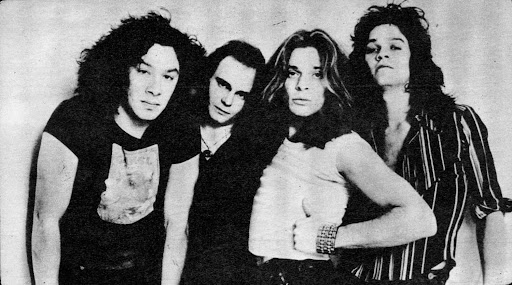
There are times in a musician’s life when they think about how a new style of music is born or more precisely how a new, never-before-seen guitar playing style appears that makes everyone wonder and cringe with amazement. Whether it’s a result of long hours of practicing, or a pure talent, or most likely a combination of both doesn’t really matter, because the end result is “jaw dropping awesomeness”

By Unknown author – Pelo magazine #153, 1981, Public Domain,
https://commons.wikimedia.org/w/index.php?curid=113958385
Such an amazing talent whose guitar riffs and solos will be played by future generations for years to come is Eddie Van Halen.
Back in time, in the distant 1972 he and his brother Alex Van Halen formed a band in Pasadena, California. Interesting fact was they were immigrants. Their father, Dutch by origin and their Indonesian mother, moved to the US in the 50s.
Whether because of growing up in a musician family ( their father was a jazz musician) or just for the love of music and curiosity, the two brothers along with the bassist Michael Anthony and the vocalist David Lee Roth recorded their first demo song, produced by Gene Simmons from Kiss. As of that very moment the future life for the band was crowned with constant success. The following years were very busy for the band with their twelve recorded studio albums. Needless to say, even with their debut album they sold over ten millions copies. The listeners and melomaniacs loved them from the beginning. The hundreds of mindblowing live shows they made are memorable still to this day.
Throughout the years, the members of the band have changed, but one factor made the difference – the virtuoso guitar player Eddie Van Halen. His masterful technique of playing and specific sound inspired and influenced thousands of guitarists all over the world.
There is a lot of history behind achieving the legendary playing of one of the greatest guitar heroes of all times, but we are not gonna tell the whole story, but gonna reveal that desirable tone that the guitarists strive for.
Regarding the guitars that Eddie used back then we should say the years before 74, he played Gibson, after that he built sort of a Fender guitar, later called the notorious Frankenstein guitar – combination of Strat body and Gibson humbucking pickup and added Floyd Rose tremolo, then sprayed with black paint on a white body, later became red. With spray paint cans from a bicycle store and painted in the backyard by himself, that guitar ended up on display in the Museum of Modern Art as one of the most famous instruments in musical history. The Super Strat was born!
A little bit of his technique of playing which is certainly as important as everything else that makes him such a legend. An intensive use of the whammy bar gives his guitar a unique sound. Despite not being the first with that technique, the extensive two hand tapping brought his playing to a whole new level.
In hunting for the famous “Brown Sound ” of Eddie, let’s take a look into his amplifiers. It’s well known that in the early years of his career he used to play with the stock Marshall Super Lead 1959 .
An Ohmite Variac set at different levels alongside a dummy load box was an additional gear as well.
Most of his studio recordings were played with the Marshall Plexis and Superleads.
Later on after a lot of touring with this brand, he eventually experimented with other brands and Peavey created his signature model called Peavey 5150. In 2004 Van Halen and Peavey parted their ways and that amplifier continued under name Peavey 6505. After that Eddie made a partnership with Fender under EVH brand and the name 5150 was used again.

Photo by Anirudh Koul from Montreal, Canada (2007)
Equipped inside around a centered printed circuit board, that amplifier has five preamp tubes in a very simple manner. Initially used with four Sylvania 6L6 Power Tubes and later changed to Ruby Tube 6L6 Power Tubes along with the fixed bias all together responsible for the specific 5150 sound. Setting bias to a lower value causes Power Tubes to run at lower energy so the result is called “cold biased”. With these settings it’s very easy to control the gain.
In the times when the music gained its strength, when every musician experimented with new and old techniques, there was the possibility to be born something new, something different that people in the future would call a legend. Such a legend will remain Eddie Van Halen. The energy that his music spread among people is comparable only to magic. He is the man with a major impact on the history of Rock music.
Next week will dig deeper, recreate a tone with our Amplifikation VVV and tell more history!
Stay tuned!

